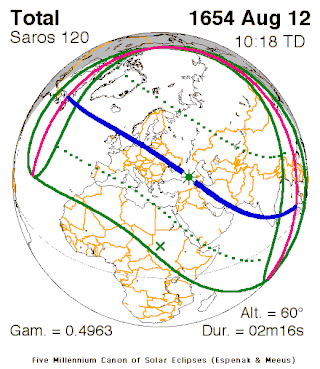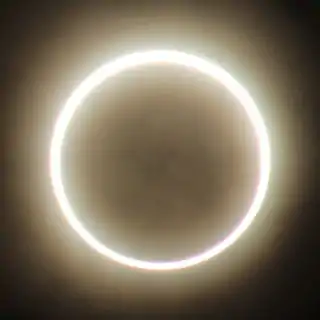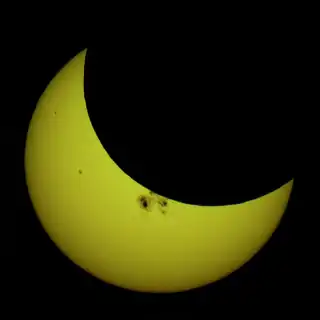Solar eclipse of August 12, 1654
A total solar eclipse occurred on August 12, 1654. A solar eclipse occurs when the Moon passes between Earth and the Sun, thereby totally or partly obscuring the image of the Sun for a viewer on Earth. A total solar eclipse occurs when the Moon's apparent diameter is larger than the Sun's, blocking all direct sunlight, turning day into darkness. Totality occurs in a narrow path across Earth's surface, with the partial solar eclipse visible over a surrounding region thousands of kilometres wide.
| Solar eclipse of August 12, 1654 | |
|---|---|
 Map | |
| Type of eclipse | |
| Nature | Total |
| Gamma | 0.4962 |
| Magnitude | 1.0285 |
| Maximum eclipse | |
| Duration | 136 sec (2 m 16 s) |
| Coordinates | 41.7°N 42.5°E |
| Max. width of band | 110 km (68 mi) |
| Times (UTC) | |
| Greatest eclipse | 10:17:43 |
| References | |
| Saros | 120 (41 of 71) |
| Catalog # (SE5000) | 8673 |
Observations and history
The eclipse occurred during the Battle of Shklow (1654).
Related eclipses
It is a part of solar Saros 120.
Eclipse in art
- De Eclipsi solari anno M. DC. LIV., die XII. augusti, in Europa a pluribus spectata tubo optico, satirical writing by Jakob Balde (1662).
This article is issued from Wikipedia. The text is licensed under Creative Commons - Attribution - Sharealike. Additional terms may apply for the media files.
.jpg.webp)
.jpg.webp)
.jpg.webp)

